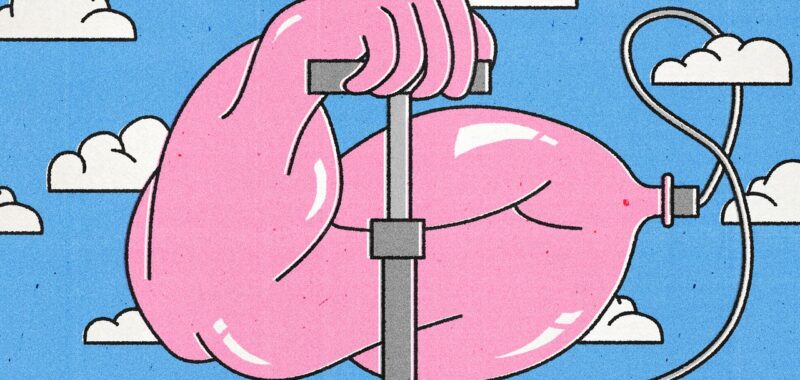In the age of functional training and workouts designed to supposedly help us live longer, I’ve found that working on my biceps has weirdly become a sort of guilty pleasure. Do stronger biceps help me out in my daily life on Manhattan’s West Side? Maybe a little, but not really. Will they extend my stay in this mortal coil? Doubtful. But I’ll be damned if I’m going to let the trend cycle influence my human right to exercise for aesthetic reasons. Sun’s out, guns out, baby.
Unless your job requires you to squeeze into an F1 cockpit, race a bicycle up Alpe d’Huez, or make Mike White happy, there’s no reason to train your biceps—but there’s no reason not to train your biceps, either. But surely you’d prefer to have a cut set of arms?
Why it’s important to do a range of biceps exercises
In order to understand what makes a great biceps exercise—and why it’s worth having more than one of them in your rotation—you should first have an understanding of the anatomy involved. (I’ll keep it brief, I promise.) The biceps brachii—collectively, the long and short heads of the biceps—are the part you would probably point to if I asked you to show me your biceps muscle. (Oh, also—“biceps” is singular as well as plural. There is no “bicep.”) The long head is on the outside, and the short head is the part that’s closest to your torso.
But there’s more. (Only a little bit, I swear.) “You also have the brachialis, which helps with elbow flexion, and then the brachioradialis, which connects into the forearm,” says Max Castrogaleas, CSCS, an exercise physiologist at HSS. “They’re going to be involved when you’re doing exercises like a hammer curl or a reverse curl, and they’re also going to give you the support you need to perform the more isolated movements.”
The point is, while the biceps brachii gets most of the glory, strengthening your brachialis and brachioradialis is what ultimately enables you to train those mighty mirror muscles. And the more attention you pay to these unsung heroes, the bigger you can ultimately go on your curls. Conveniently, though, the best biceps exercises give you a bit of both, and if you include even two or three of the exercises below in your training, you’ll be golden.
The best biceps exercises, according to trainers
Supinated-grip biceps curl
If it ain’t broke, don’t fix it. The OG biceps curl is still one of the best exercises you can do to fill out your shirtsleeves. “‘Supinated grip’ just means you’re performing the curl with your palms facing up,” says Luke Carlson, founder and CEO of Discover Strength. “This can be done with dumbbells, a barbell, or on a machine. Either way, the supinated-grip biceps curl is key.” That’s because, of all the biceps exercises, this one hits the muscle group most holistically. “The biceps does three things,” explains Carlson. “The first function is to supinate, or rotate outwards. That’s actually the first role of the bicep, and very few people who lift weights are aware of that. The second is to cause flexion at the elbow, which is what we think about when we do a curl.” (The third is to bring the humerus forward—that is, raise your arm.) The supinated-grip biceps curl takes direct aim at the first two. “To maximize the biceps, we want to make sure we’re supinating and then curling as well,” says Carlson. The supinated-grip biceps curl “accomplishes two of the major functions of the biceps, so it’s a wonderful exercise, because it mimics the exact kinesiological function of the biceps.”

